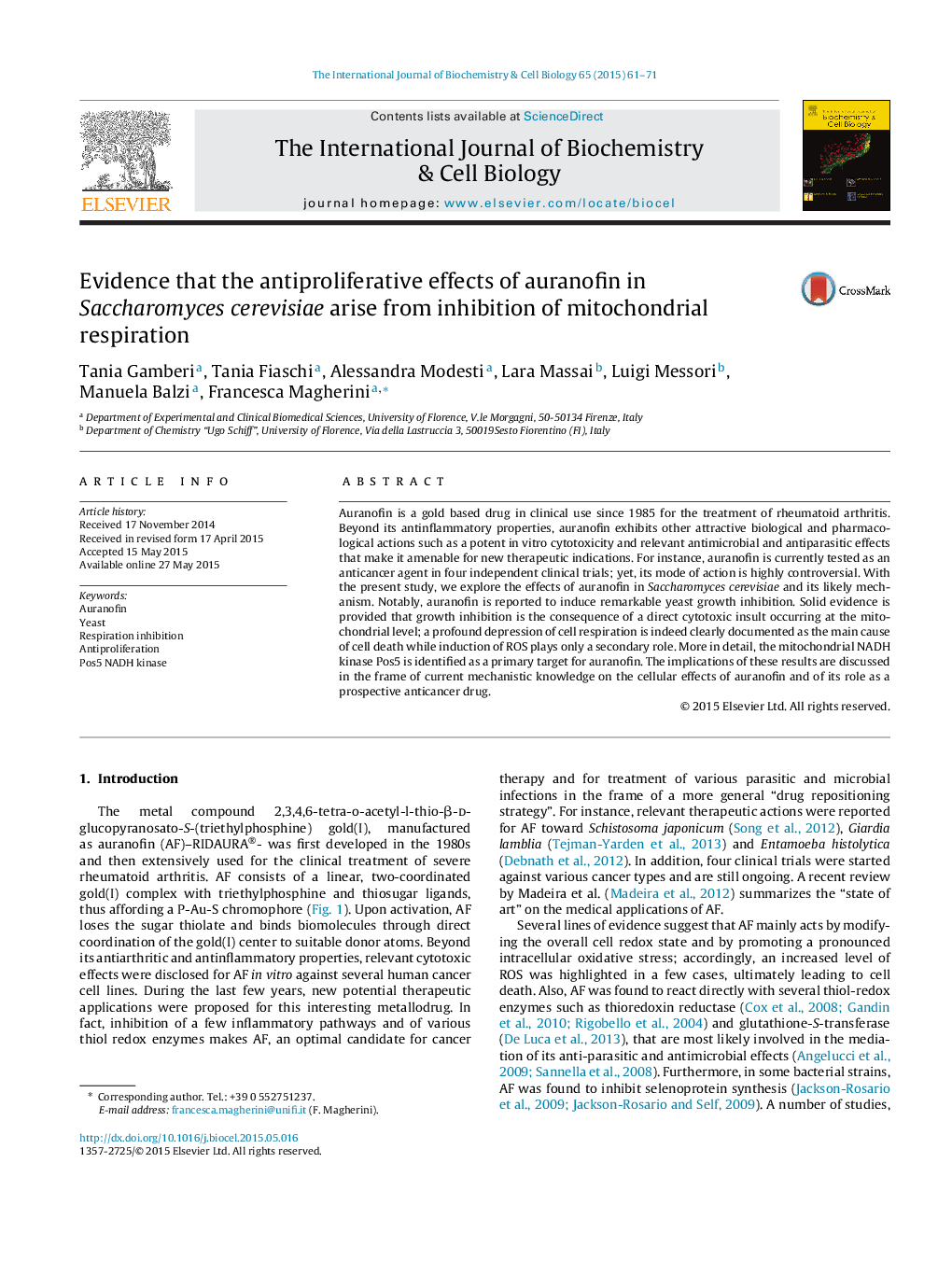| Article ID | Journal | Published Year | Pages | File Type |
|---|---|---|---|---|
| 1983473 | The International Journal of Biochemistry & Cell Biology | 2015 | 11 Pages |
•Auranofin affects Saccharomyces cerevisiae growth and viability.•Respiring yeast cells show an increased sensitivity to auranofin treatment.•Auranofin inhibits mitochondrial respiration.•Inhibition of respiration is not induced by an increase in ROS production and involved Pos5 NADH kinase.
Auranofin is a gold based drug in clinical use since 1985 for the treatment of rheumatoid arthritis. Beyond its antinflammatory properties, auranofin exhibits other attractive biological and pharmacological actions such as a potent in vitro cytotoxicity and relevant antimicrobial and antiparasitic effects that make it amenable for new therapeutic indications. For instance, auranofin is currently tested as an anticancer agent in four independent clinical trials; yet, its mode of action is highly controversial. With the present study, we explore the effects of auranofin in Saccharomyces cerevisiae and its likely mechanism. Notably, auranofin is reported to induce remarkable yeast growth inhibition. Solid evidence is provided that growth inhibition is the consequence of a direct cytotoxic insult occurring at the mitochondrial level; a profound depression of cell respiration is indeed clearly documented as the main cause of cell death while induction of ROS plays only a secondary role. More in detail, the mitochondrial NADH kinase Pos5 is identified as a primary target for auranofin. The implications of these results are discussed in the frame of current mechanistic knowledge on the cellular effects of auranofin and of its role as a prospective anticancer drug.
Graphical abstractFigure optionsDownload full-size imageDownload high-quality image (196 K)Download as PowerPoint slide
